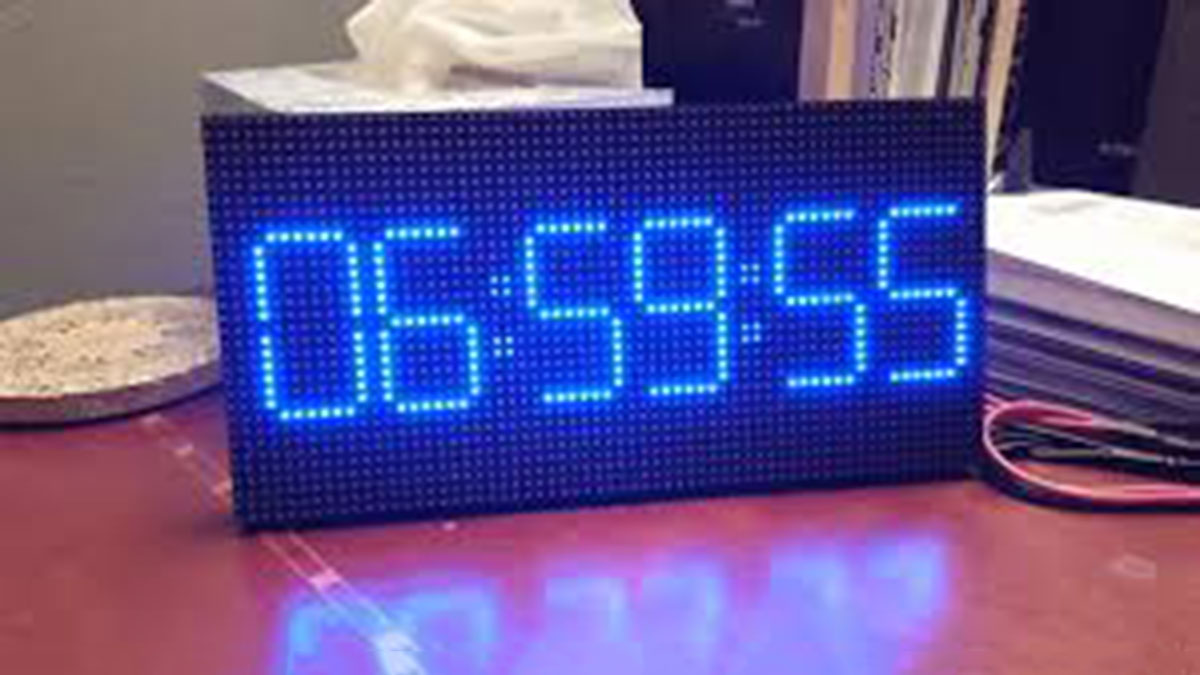Thanks to the work of the Arduino and ESP8266 community, this cool clock is a surprisingly easy to build!

- Just two main components: Display (obviously) and a WiFi MicroController
- No soldering required
- No programming skill required, code is provided!
Let’s get started!
Step 1: Parts List
Although I’ve included links to where I bought my parts, these parts can be easily purchased from other vendors all around the world.
- P3 64×32 RGB LED Matrix $20
- NodeMCU 32MB ESP8266 WiFi Microcontroller module $4.95
- Female to Female 20cm Dupont jumper wires $0.85
- Micro USB Data/Sync cable and 5V phone charger wall adapter (I had these and didn’t have to buy it)
- 5V 2A MINIMUM Power Supply (I had this and didn’t have to buy it) $7.95
- Solderless Female barrel connector to connect the Power Supply to the display power cable.
IMPORTANT:
- Some USB cables are designed just for power delivery (charging) — these are ok to power the finished clock, but to upload code to the ESP we will need a data/sync USB cable.
- The P3 RGB Matrix has over 6000 LEDs. For this clock, we will never turn all of them at once, so 2 Amp is more than sufficient. However, if you plan on doing more with the display and have all LEDs set to white, the recommended power supply is 8 Amp minimum.
Step 2: Wiring Summary
There are a lot of wires, but don’t worry. All we’re doing is connecting one pin to another.
Just take your time. Double check each connection before and after you plug it in.
Make sure the wires are fully inserted so they would not accidentally come undone. They are quite snug when fully inserted.
Step 3: ESP Wiring
First, let’s put jumper wires on the ESP. Don’t worry if your wire colors are different than mine. Which pair of pins are connected by each wire is what is important.
Do NOT connect the ESP to your PC YET. We need to complete all wiring before we power anything up.
We are using pins D0 through D8 and two GND.
We can skip the 3V pin because the ESP will be powered via the USB port.
We also skip the Transmit and Receive pins because we will communicate to the ESP via USB or WiFi.
Read more: Morphing LED Matrix Digital Clock
